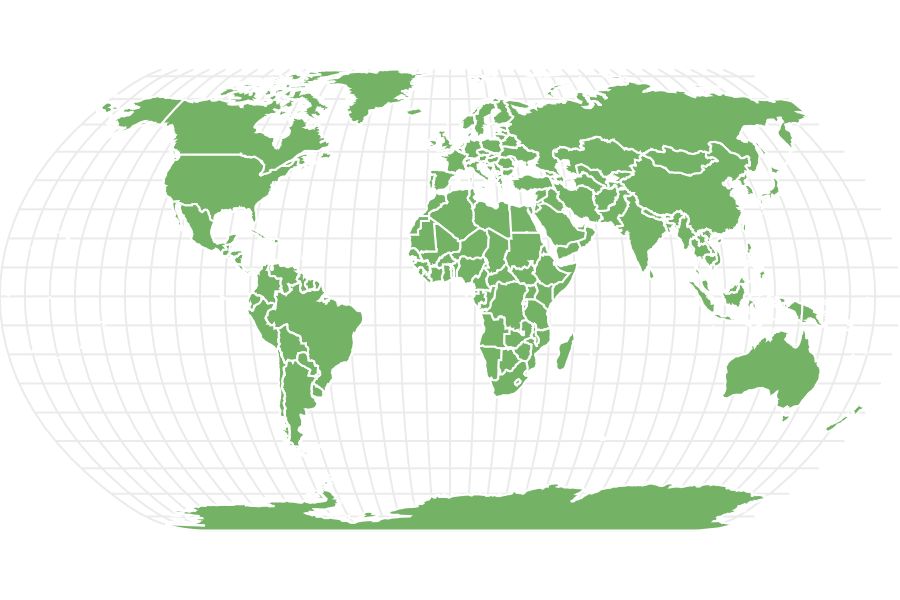Harbor Seal
Phoca vitulina
Harbor seals can dive as deep as 1400 feet
Advertisement
Harbor Seal Scientific Classification
- Kingdom
- Animalia
- Phylum
- Chordata
- Class
- Mammalia
- Order
- Carnivora
- Family
- Phocidae
- Genus
- Phoca
- Scientific Name
- Phoca vitulina
Read our Complete Guide to Classification of Animals.
Harbor Seal Conservation Status
Harbor Seal Facts
- Prey
- Aquatic animals and ducks
- Name Of Young
- Pup
- Group Behavior
- Solitary/Group
- Fun Fact
- Harbor seals can dive as deep as 1400 feet
- Estimated Population Size
- 350,000 to 500,000
- Biggest Threat
- Human activity, including hunting and pollution of habitat
- Most Distinctive Feature
- Their whiskers. Unlike other mammals, whose whisker follicles have two blood sinuses, the harbor seal’s whiskers have three.
- Other Name(s)
- Common seal, Western Atlantic common seal, Eastern Atlantic common seal, Ungava or Lacs des Loups Marins seal, Pacific common seal, Insular seal
- Gestation Period
- About nine months
- Litter Size
- 1
- Habitat
- Coastal waters of the Pacific and Atlantic Oceans, the Baltic Sea and the North Sea
- Predators
- Humans, sharks, polar bears, wolves, coyotes, killer whales
- Diet
- Carnivore
- Favorite Food
- Fish, crustaceans, mollusks, ducks
- Type
- Mammal
- Common Name
- Harbor seal
- Number Of Species
- 5
- Location
- Western Asia, eastern Asia, Europe and North America
Harbor Seal Physical Characteristics
- Color
- Brown
- Grey
- White
- Tan
- Skin Type
- Fur
- Top Speed
- 12 mph
- Lifespan
- 30 to 35 years for females, 20 to 25 years for males
- Weight
- 370 pounds
- Length
- 6.1 feet
- Age of Sexual Maturity
- 3.72 years for females, 4 to 5 years for males
- Age of Weaning
- Four to six weeks
View all of the Harbor Seal images!
“A Harbor Seal is known as the photogenic seal.”
With its round baby-like head, big, curious eyes, and habit of hauling out close, but not too close, to human habitation, harbor seals are the favorite pinnipeds of many humans. That these Northern Hemisphere seals are plentiful overall is another bright spot. They even seem to love to pose for the camera. The following are some facts about this fascinating animal:
5 Incredible Harbor Seal Facts!
Some facts about harbor seals are:
- They have V-shape nostrils that can close completely when they dive
- They’re considered “true seals,” which means they have no external ear structures.
- Harbor seals don’t travel far from their home range to find food.
- Harbor seals not only hunt in the ocean but will travel up rivers to find fish such as salmon or trout.
- Pups seem to be born within the same two-and-a-half-month window.
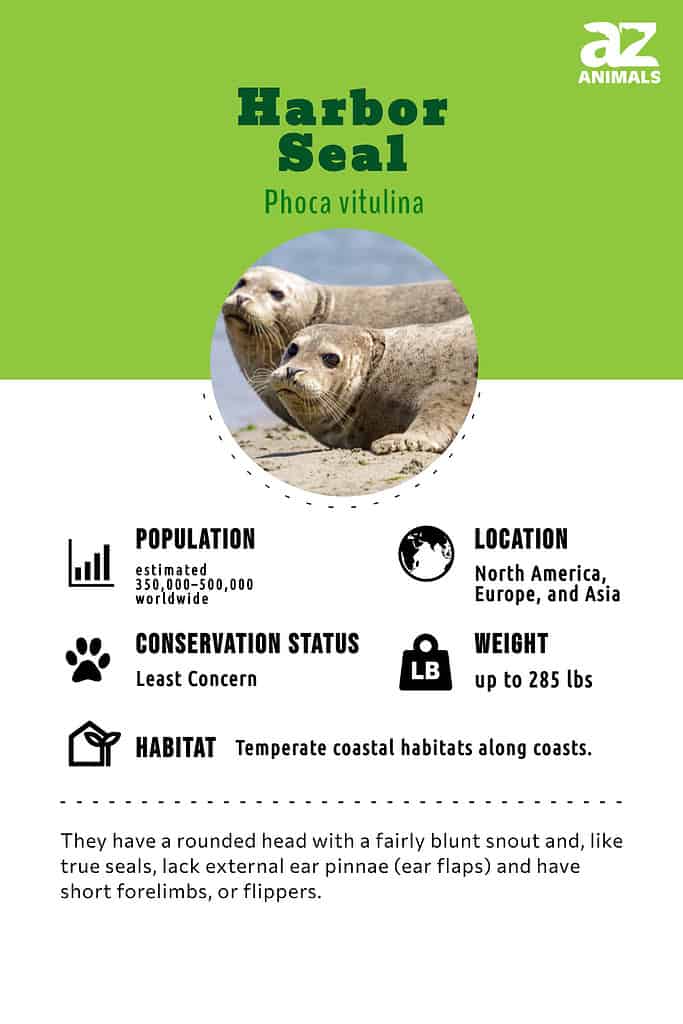
Scientific Name
The harbor seal’s scientific name is Phoca vitulina. Phoca is simply Latin for seal, and vitulina is Latin for veal. So the scientific name can mean “a seal that looks like a calf.”
Evolutionary History

The harbor seal is one of 18 species of true seals.
©iStock.com/AndreAnita
The harbor seal is an earless seal, or true seal, and is of the phocid family. According to fossil records, the earliest phocid appeared around 12 million to 15 million years ago, during the Miocene epoch. These ancestors were once able to walk on land, as evidenced by their skeletal structure. The modern harbor seal descended from these ancestral phocids about 2 million to 3 million years ago, during the Pliocene epoch, appearing in North America when the Bering Strait formed.
Types of
There are 18 species of true seals, including the harbor seal (Phoca vitulina). Also known as the common seal, there are five commonly recognized subspecies of harbor seals. These are:
- Eastern Atlantic Common Seal (Phoca vitulina vitulina) – found in Europe and Western Asia
- Western Atlantic Harbor Seal (Phoca vitulina concolor) – endemic to North America
- Ungava Seal (Phoca vitulina mellonae) – endemic to a small series of freshwater lakes in the Ungava Peninsula, located in northern Quebec
- Pacific Harbor Seal (Phoca vitulina richardsi) – Western North America
- Insular Seal (Phoca vitulina stejnegeri) – Eastern Asia; not currently recognized as a separate species but is a part of Phoca vitulina richardsi.
Appearance
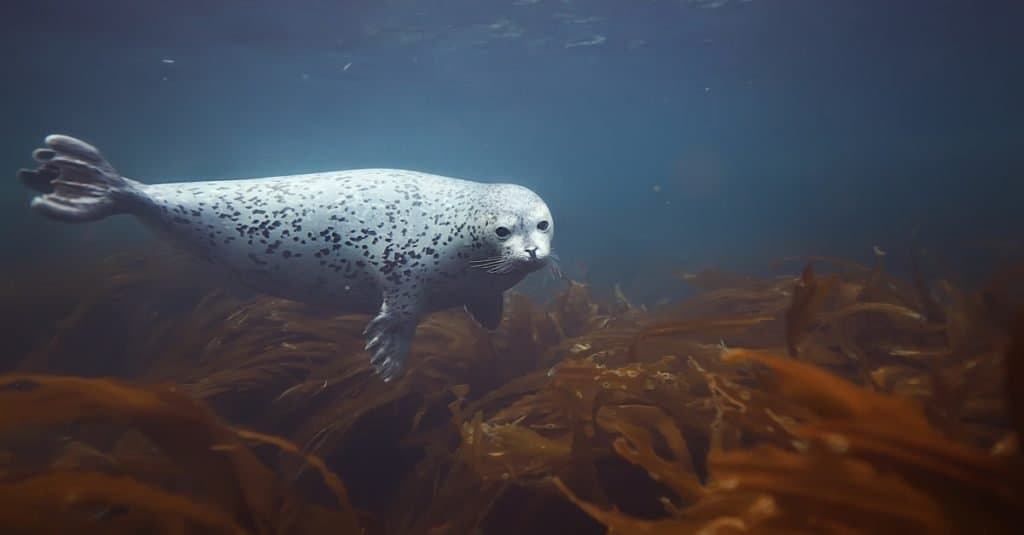
Harbor Seal diving among the kelp.
©Kichigin/Shutterstock.com
A healthy harbor seal is plump, thanks to the layer of insulating blubber under its fur and torpedo-shaped. These are adaptations that allow them to dive deeply into cold water. Another adaptation is the narrowness of their nostrils, which can close up completely when they’re underwater. The whiskers are extra sensitive in order to allow the seal to feel its way in the low light of deep water.
The harbor seal has large eyes and a head that’s large and round, which gives it a rather babyish look. It doesn’t have ear pinnas though an ear-opening can be seen behind the eyes. The seal has long flat flippers with five “fingers” and thin, curved claws. Harbor seal coats can be light, dark and have rings, spots, and blotches depending on how much melanin the fur contains. The seal’s resting metabolism can be over twice as high as that of another comparably sized mammal that lives on land, another adaptation that makes their seafaring life easier.
Behavior
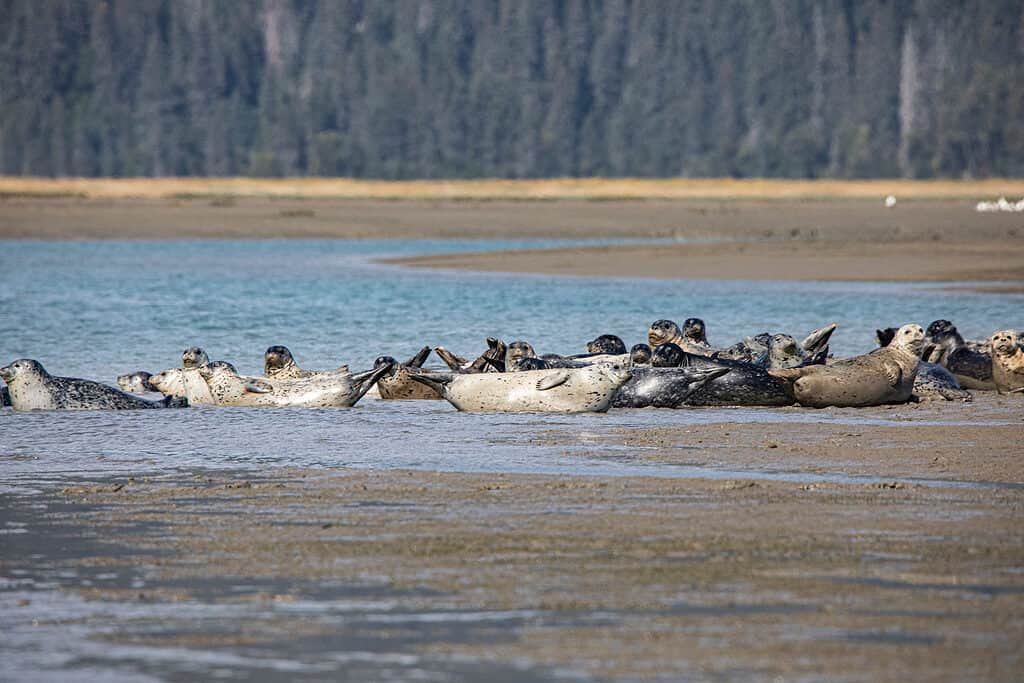
Harbor seals can haul out on sandy beaches, rocky coastlines, or even ice floes.
©Danita Delimont/Shutterstock.com
Harbor seals are diurnal, which means they’re most active during the day. They’re usually alone, but they can form small pods. These pods don’t seem to have any form of social order, though the animals mostly get along. The harbor seal doesn’t migrate but hauls out, which means it leaves the water now and then to rest, avoid predators and stormy ocean weather or give birth. They can haul out on sandy beaches, rocky coastlines, or even ice floes. Their preference for bays and harbors gives them their name.
The seal molts or sheds its skin, a couple of months after the females, or cows give birth. Who molts when depends on the animal’s age and sex. The usual order is: pups shed their skin first, then juveniles, then cows, then adult males, or bulls.
Though harbor seals can dive to over 1400 feet down and hold their breath for half an hour, their dives are usually shallower and shorter than this. Scientists have noticed that their dives are either V or U-shaped. Cows prefer U-shaped dives, and since females are the ones who teach the young, most other seals dive this way as well. However, males sometimes make V-shaped dives.
Harbor seals are also unusually quiet for seals and sea lions, though they do vocalize to each other.
Habitat
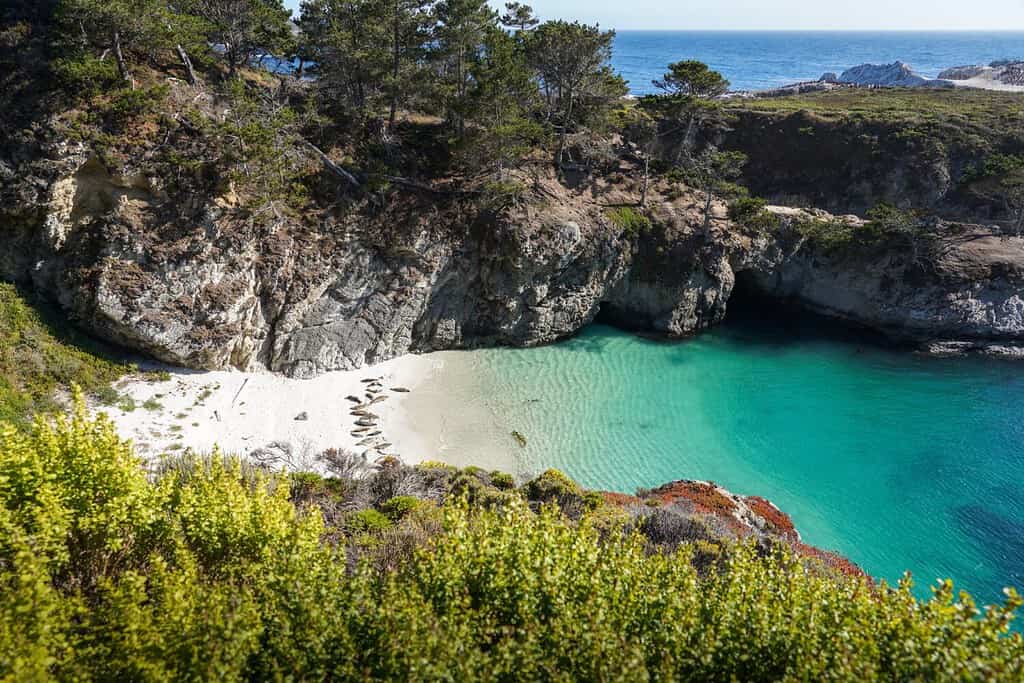
Harbor seals may live on rocky coasts or sandy beaches.
©Lu Yang/Shutterstock.com
Harbor seals prefer to stay in their familiar habitat, though they can spend days in the water looking for food. They haul out on rocky coasts like those found in Maine or sandy beaches such as those found in North Carolina’s Outer Banks. They also haul out on the ice in the Arctic. Not all harbor seals live near saltwater. The Ungava seal, P.v. mellonae, lives in freshwater lakes on Quebec’s Ungava Peninsula. They are one of the few seals that live in freshwater all year. There are only a few hundred of them, and unlike other harbor seals, they’re listed as endangered.
Diet

Harbor seals prefer fish that are big enough to provide nourishment but small enough to be swallowed whole, even as the seal has an impressive set of teeth.
©David Pegzlz/Shutterstock.com
These seals eat 5 to 6 percent of their weight every day, and that can be as much as 18 pounds of provender.
Because harbor seals don’t like to travel very far from their haul-out point, they specialize in catching marine life that’s abundant in the area and easy to catch. But it helps to go back to the beginning of the harbor seal’s life. A harbor seal mother’s milk is unusually rich in fat, and a pup only needs to nurse for a month or so before it’s ready to forage on its own. Even then, the pup may only take crabs and shrimp, since they’re easier prey than fast-swimming fish.
These seals prefer fish that are big enough to provide nourishment but small enough to be swallowed whole, even as the seal has an impressive set of teeth. Their diet includes a wide range of fish including mackerel, flatfish, codfish, and hake, but they’ll also eat squid and mollusks. Though they don’t chew, they’ll tear prey into manageable pieces. Shells are crushed with the animal’s back teeth. Harbor seals usually get what water they need from their prey.
Predators and Threats

Threats to these seals include being caught in nets meant for other sea life.
©RobsonAbbott/ via Getty Images
Full of fat, harbor seals themselves make good eating for a variety of animals. These include sharks and killer whales, who are fond of knocking them off ice floes into the water. Polar bears also prey on these seals and humans who live in the Arctic region hunt seals for their meat, blubber and hide. Coyotes, wolves, and bears even eat harbor seal pups when they are left alone on land while their mothers find food and sea lions aren’t above taking pups either. Eagles easily swoop upon them from above and bear them away.
Threats to these seals include being caught in nets meant for other sea life. Polluted water sickens the seals, and a heavily polluted body of water can cause the extirpation of harbor seals that would otherwise live there.
These seals are also parasitized by organisms that can sicken them if their immune system becomes compromised. These parasites are often harmless to a healthy seal, but some can transmit dangerous viruses or bacteria. For example, a bacteria called Leptospira interrogans can cause a potentially fatal disease in seals. Phocine distemper virus, or PDV killed 18,000 harbor seals in 1988. Seals are even more susceptible to disease if the waters they swim in are polluted.
“What Eats the Harbor Seal?”
Polar bears, killer whales, sharks, coyotes, and humans eat these seals.
“What Does the Harbor Seal Eat?”
These seals eat fish, mollusks, crustaceans, and the occasional duck.
Reproduction and Life Cycle
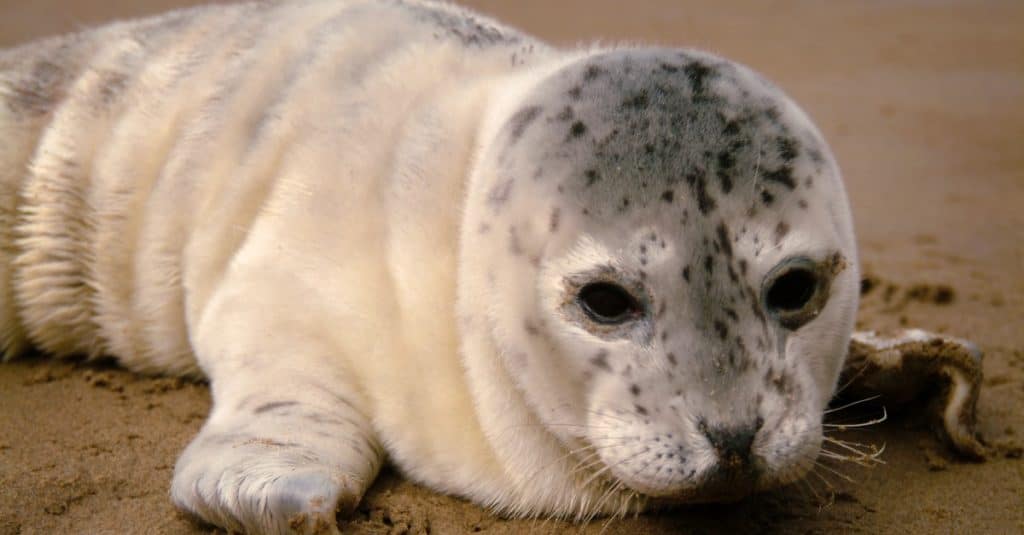
Harbor Seal pups spend much of their time out of the water on beaches warming up or resting while their moms are away feeding, sometimes for up to 48 hours.
©Edmund Lowe Photography/Shutterstock.com
Harbor seals mate once a year. Mating occurs underwater, so it is difficult for biologists to see just how it happens. They also know that males attract females by performing, vocalizing, and fighting other males. Harbor seals are probably monogamous, but males have been suspected of mating with more than one female.
One interesting aspect of this seal reproduction is that the embryo undergoes a diapause for about 11 weeks after fertilization. This means that it doesn’t implant into the mother’s uterus for close to three months. After this, it takes about 8 and a half to 10 months for the baby to be born. Pups arrive in February in the warmer parts of the seal’s range, and in July or August in the colder parts. The seal gives birth on land, an adaptation that protects her and her baby from at least marine predators.
It is important that the mother not be disturbed around the time of the birth and humans stay well away from her haul-out area. These seals have abandoned their pups when they are stressed.
Seal pups can weigh as much as 35 pounds when they’re born. Since their coats are as thick as an adult’s, they’re ready to swim and dive shortly after birth, though they’ll ride on their mother’s back until they’re weaned. By the time they finish weaning, baby seals weigh twice their birth weight. Only the mother takes care of the baby, and she’ll mate again right after it is independent.
Female seals are ready to reproduce when they’re three to four years old, even though they’re not really grown until they’re six or seven. Males are ready to breed when they are four or five, but they’re not fully grown until they are seven to nine. Females live longer than males, and males more often die as juveniles. Females live about 35 years and males live about 25 years.
Population
Because these seals are very charismatic and much of the world has banned seal hunts, they, save the P.v. stejnegeri and Ungava seals, are common. There may be as many as half a million of these seals worldwide. Indeed, their overall population is increasing despite die-offs from such diseases as the Phocine distemper virus.
View all 104 animals that start with HHarbor Seal FAQs (Frequently Asked Questions)
Are harbor seals carnivores, herbivores, or omnivores?
Harbor seals are carnivores.
Are harbor seals dangerous?
Harbor seals are usually not dangerous to humans, but they can become aggressive if they come to associate humans with food. This is why a person should never feed a wild harbor seal. As their dentition resembles that of a wolf, with large fangs, a harbor seal can deliver a serious wound.
What does a harbor seal eat?
Harbor seals dine on a great variety of aquatic life, including salmon, mackerel, codfish, anchovies, whiting, Pacific trout, sand lances, and herring. They also eat squid, octopus, shrimp, crabs and have been known to eat ducks.
How long does a harbor seal live for?
Female harbor seals can live for 35 years and males live for 25 years. The longest-lived harbor seal known lived for 47.6 yea
How many harbor seals are left in the world?
The conservation status of harbor seals is least concern, and there are between 350,000 to half a million of them in the world.
How long can a harbor seal hold its breath?
A harbor seal can hold its breath for as long as 30 minutes, but most only need to hold their breath for a few minutes when they dive.
Where do harbor seals live?
Harbor seals live in the northern hemisphere, and their habitat ranges from the Pacific Ocean to the Atlantic Ocean, the southeastern part of the Bering Sea, and north to the Barents Sea in the Arctic Ocean.
Thank you for reading! Have some feedback for us? Contact the AZ Animals editorial team.
Sources
- Wikipedia, Available here: https://en.wikipedia.org/wiki/Harbor_seal
- Sea World Parks & Entertainment, Available here: https://seaworld.org/animals/all-about/harbor-seal/diet/
- EHA Consulting Group, Available here: https://www.ehagroup.com/resources/pathogens/leptospira-interrogans/
- Alaska Department of Fish and Game, Available here: https://www.adfg.alaska.gov/index.cfm?adfg=harborseal.printerfriendly
- Animal Diversity Web, Available here: https://animaldiversity.org/accounts/Phoca_vitulina/
- Seattle News, Available here: https://www.seattlepi.com/seattlenews/article/Celebrity-harbor-seal-bites-boater-in-Friday-11818812.php

